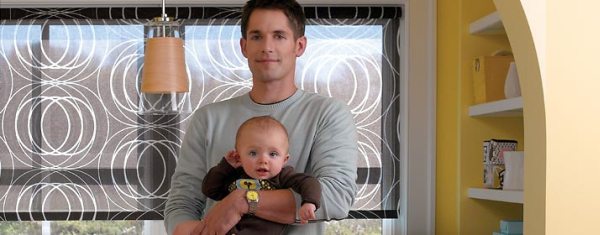How Do I Fix a New Door with a Gap at the Top?
 October 7, 2009
October 7, 2009 Question
 How can I fix a new door that has an uneven gap at the top? I know that the proper thing to do is to take out the door jamb and square it up, but I hope there's another way. After installing the door I realized there's a space that opens from 1/8-inch at one side to 1/2-inch at the other. What can I do? (Robert from Manitoba)
How can I fix a new door that has an uneven gap at the top? I know that the proper thing to do is to take out the door jamb and square it up, but I hope there's another way. After installing the door I realized there's a space that opens from 1/8-inch at one side to 1/2-inch at the other. What can I do? (Robert from Manitoba)
Answer
Robert, thank you for writing in to us. We went to our friends at casaGURU, Canada's home remodeling experts, and they've given us a very sound response. Good luck!
When Doing It Yourself, Be Practical
The challenge you're facing here is typical of many home renovation issues, and there's an important principle you need to understand in order to stay sane. Success with any reno depends heavily on your ability to choose correctly between solving root problems on the one hand, and applying sound, long-lasting secondary solutions on the other. We're all in favor of fixing things properly, but sometimes "properly" involves a whole set of steps that unfold like nasty dominos gone berserk. Your door is a classic case in point. Sure, taking out the door jamb and squaring it up to match the door would be best, but that’s not all there is too it. The jamb isn't going to come out unless the trim comes off. And it's quite likely that you'll damage the walls as you lever off the trim. And if you're going to repair one small section of wall, you should really do the whole room. And if you're repairing walls, then you'll certainly need to repaint. But does it really make sense to repaint when you've got such bad windows . . .
Sure, taking out the door jamb and squaring it up to match the door would be best, but that’s not all there is too it. The jamb isn't going to come out unless the trim comes off. And it's quite likely that you'll damage the walls as you lever off the trim. And if you're going to repair one small section of wall, you should really do the whole room. And if you're repairing walls, then you'll certainly need to repaint. But does it really make sense to repaint when you've got such bad windows . . .
The sensible solution is to carefully glue an extension of wood on the top of the door. Plane this wood to create an even, 1/8-inch-wide gap all across the door, then paint to hide the patch. Work carefully and no one will ever know.
 This material was reprinted with the permission of casaGURU. casaGURU is an everyday, everywhere, anytime homeowner website built on the premise that every home deserves a house expert.
This material was reprinted with the permission of casaGURU. casaGURU is an everyday, everywhere, anytime homeowner website built on the premise that every home deserves a house expert.
Extra Help: For complete DIY guidance on how to hang a new internal door, including removing the old one and fixing the hinge areas, go to this handy advice page from Homebase Advice Center. You can also get some good new door hanging tips from Videojug's How to Hang a Door video.
Sometimes doors tend to gap over time on the hinge side of the door, causing the door to jut too much into the jamb side. The result is a sticky door that is difficult to open or close properly. Conventional wisdom says to plane the side of the door that rubs against the jamb, but handyman Don Spencer shows you how to get to the root problem and make a better DIY solution.




















